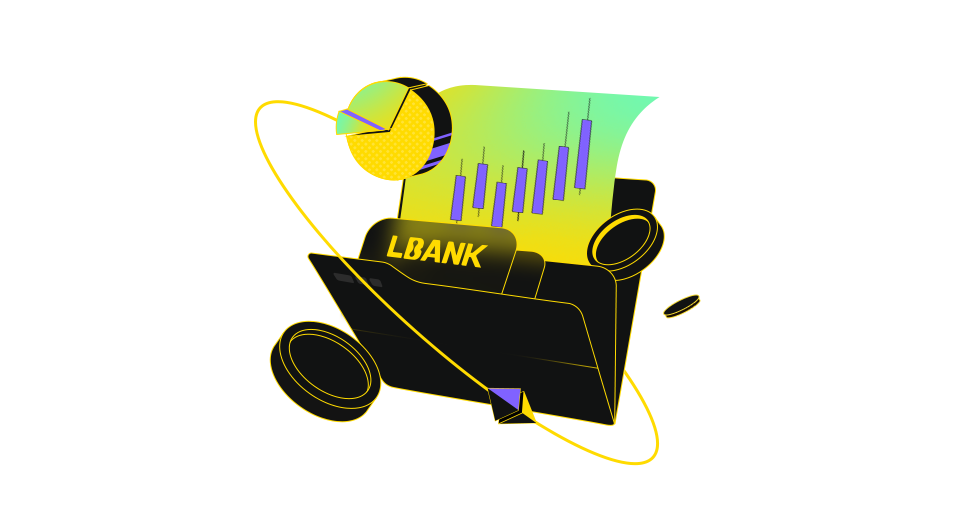"Understanding Tariffs: Essential Insights for Beginners on Their Tax-like Nature."
Are Tariffs a Type of Tax?
Introduction
Tariffs and taxes are both financial charges imposed by governments, but they serve distinct purposes and operate in different contexts. While taxes are widely understood as levies on income, sales, or property to fund public services, tariffs are specific fees applied to imported goods. This article explores whether tariffs qualify as a type of tax, their key differences, historical and modern applications, and the broader economic implications of their use.
Defining Tariffs and Taxes
Tariffs are fees imposed by governments on goods imported from other countries. They can be structured as:
- Ad valorem tariffs: A percentage of the goods' value.
- Specific tariffs: A fixed fee per unit (e.g., per ton or item).
Tariffs are primarily used to:
- Protect domestic industries from foreign competition.
- Generate government revenue.
- Influence trade policies or retaliate in trade disputes.
Taxes, in contrast, are compulsory charges levied on individuals or businesses within a country to fund public services like infrastructure, education, and healthcare. Common types include:
- Income taxes: Levied on earnings.
- Sales taxes: Applied to purchases.
- Property taxes: Based on real estate value.
Key Differences Between Tariffs and Taxes
1. Purpose:
- Tariffs aim to regulate trade and protect domestic markets.
- Taxes fund government operations and public services.
2. Scope:
- Tariffs apply only to cross-border trade (imports/exports).
- Taxes apply domestically to transactions, income, or assets.
3. Economic Impact:
- Tariffs raise the cost of imported goods, potentially leading to higher consumer prices or trade wars.
- Taxes redistribute wealth and influence domestic spending/saving behaviors.
Historical and Modern Context
Historically, tariffs were a major revenue source for governments before income taxes became widespread. For example:
- The U.S. Smoot-Hawley Tariff (1930) raised import duties to protect farmers during the Great Depression but worsened global trade collapse.
In recent decades, tariffs have been used as strategic tools:
- The U.S.-China Trade War (2018–2020) saw both nations impose reciprocal tariffs, disrupting global supply chains.
- The EU’s tariffs on U.S. steel and aluminum (2020) responded to U.S. protectionist policies, highlighting tensions in trade alliances.
Are Tariffs a Type of Tax?
While tariffs share similarities with taxes—both are government-imposed and generate revenue—they are not identical. Here’s why:
- Narrow Application: Tariffs target only imports, whereas taxes have broad domestic reach.
- Primary Objective: Tariffs prioritize trade control over revenue generation (though they can do both).
- Legal Framework: Tariffs fall under trade laws, while taxes are governed by fiscal policy.
Thus, tariffs are a specialized form of fiscal levy but not a conventional tax.
Potential Consequences of Tariffs
1. Inflation: Higher import costs can increase prices for consumers.
2. Trade Wars: Retaliatory tariffs may harm exporters and global economic stability.
3. Supply Chain Disruptions: Businesses relying on imports face increased costs and delays.
4. Revenue vs. Protection: While tariffs can fund governments, overuse may hurt domestic industries dependent on foreign materials.
Recommendations for Policymakers
1. Assess Holistically: Weigh tariffs’ short-term benefits against long-term trade relationship damage.
2. Prioritize Diplomacy: Negotiate trade agreements to reduce reliance on punitive tariffs.
3. Monitor Domestic Impact: Protect vulnerable industries without triggering inflation or shortages.
Conclusion
Tariffs and taxes are distinct tools with overlapping characteristics. Tariffs function as trade-specific levies rather than general taxes, though both influence economic behavior. Misclassifying tariffs as taxes overlooks their strategic role in international relations. Policymakers must balance protectionism with global cooperation to avoid unintended economic fallout. Understanding these differences is essential for informed debates on trade and fiscal policy.
Key Dates Recap
- 1930: Smoot-Hawley Tariff exacerbates global depression.
- 2018: U.S.-China trade war begins with reciprocal tariffs.
- 2020: EU counters U.S. steel/aluminum tariffs, straining transatlantic trade.
By clarifying the nuances between tariffs and taxes, stakeholders can better navigate the complexities of modern economics.
Introduction
Tariffs and taxes are both financial charges imposed by governments, but they serve distinct purposes and operate in different contexts. While taxes are widely understood as levies on income, sales, or property to fund public services, tariffs are specific fees applied to imported goods. This article explores whether tariffs qualify as a type of tax, their key differences, historical and modern applications, and the broader economic implications of their use.
Defining Tariffs and Taxes
Tariffs are fees imposed by governments on goods imported from other countries. They can be structured as:
- Ad valorem tariffs: A percentage of the goods' value.
- Specific tariffs: A fixed fee per unit (e.g., per ton or item).
Tariffs are primarily used to:
- Protect domestic industries from foreign competition.
- Generate government revenue.
- Influence trade policies or retaliate in trade disputes.
Taxes, in contrast, are compulsory charges levied on individuals or businesses within a country to fund public services like infrastructure, education, and healthcare. Common types include:
- Income taxes: Levied on earnings.
- Sales taxes: Applied to purchases.
- Property taxes: Based on real estate value.
Key Differences Between Tariffs and Taxes
1. Purpose:
- Tariffs aim to regulate trade and protect domestic markets.
- Taxes fund government operations and public services.
2. Scope:
- Tariffs apply only to cross-border trade (imports/exports).
- Taxes apply domestically to transactions, income, or assets.
3. Economic Impact:
- Tariffs raise the cost of imported goods, potentially leading to higher consumer prices or trade wars.
- Taxes redistribute wealth and influence domestic spending/saving behaviors.
Historical and Modern Context
Historically, tariffs were a major revenue source for governments before income taxes became widespread. For example:
- The U.S. Smoot-Hawley Tariff (1930) raised import duties to protect farmers during the Great Depression but worsened global trade collapse.
In recent decades, tariffs have been used as strategic tools:
- The U.S.-China Trade War (2018–2020) saw both nations impose reciprocal tariffs, disrupting global supply chains.
- The EU’s tariffs on U.S. steel and aluminum (2020) responded to U.S. protectionist policies, highlighting tensions in trade alliances.
Are Tariffs a Type of Tax?
While tariffs share similarities with taxes—both are government-imposed and generate revenue—they are not identical. Here’s why:
- Narrow Application: Tariffs target only imports, whereas taxes have broad domestic reach.
- Primary Objective: Tariffs prioritize trade control over revenue generation (though they can do both).
- Legal Framework: Tariffs fall under trade laws, while taxes are governed by fiscal policy.
Thus, tariffs are a specialized form of fiscal levy but not a conventional tax.
Potential Consequences of Tariffs
1. Inflation: Higher import costs can increase prices for consumers.
2. Trade Wars: Retaliatory tariffs may harm exporters and global economic stability.
3. Supply Chain Disruptions: Businesses relying on imports face increased costs and delays.
4. Revenue vs. Protection: While tariffs can fund governments, overuse may hurt domestic industries dependent on foreign materials.
Recommendations for Policymakers
1. Assess Holistically: Weigh tariffs’ short-term benefits against long-term trade relationship damage.
2. Prioritize Diplomacy: Negotiate trade agreements to reduce reliance on punitive tariffs.
3. Monitor Domestic Impact: Protect vulnerable industries without triggering inflation or shortages.
Conclusion
Tariffs and taxes are distinct tools with overlapping characteristics. Tariffs function as trade-specific levies rather than general taxes, though both influence economic behavior. Misclassifying tariffs as taxes overlooks their strategic role in international relations. Policymakers must balance protectionism with global cooperation to avoid unintended economic fallout. Understanding these differences is essential for informed debates on trade and fiscal policy.
Key Dates Recap
- 1930: Smoot-Hawley Tariff exacerbates global depression.
- 2018: U.S.-China trade war begins with reciprocal tariffs.
- 2020: EU counters U.S. steel/aluminum tariffs, straining transatlantic trade.
By clarifying the nuances between tariffs and taxes, stakeholders can better navigate the complexities of modern economics.
Related Articles
How are RWAs different from traditional financial assets?
2025-05-22 10:16:47
How does DeFi differ from traditional finance systems?
2025-05-22 10:16:47
Can you elaborate on how equitable distribution is achieved in the new tokenomic model?
2025-05-22 10:16:46
What implications does this collaboration have for blockchain gaming acceptance?
2025-05-22 10:16:46
How does U.S. Steel Corporation's performance compare to its competitors in light of the new price target?
2025-05-22 10:16:46
Are there fees associated with different deposit methods on Binance?
2025-05-22 10:16:45
How complex are DeFi protocols involved in yield farming as mentioned in the research news about CoinGecko's Earn Platform?
2025-05-22 10:16:45
How important does Buterin consider institutional adoption of cryptocurrencies?
2025-05-22 10:16:45
What types of insights or findings should be highlighted during the analysis of news articles?
2025-05-22 10:16:44
What role do stablecoins play in facilitating transactions within the cryptocurrency ecosystem?
2025-05-22 10:16:44
Latest Articles
How does DeFi differ from traditional finance systems?
2025-05-22 10:16:47
How are RWAs different from traditional financial assets?
2025-05-22 10:16:47
Can you elaborate on how equitable distribution is achieved in the new tokenomic model?
2025-05-22 10:16:46
What implications does this collaboration have for blockchain gaming acceptance?
2025-05-22 10:16:46
How does U.S. Steel Corporation's performance compare to its competitors in light of the new price target?
2025-05-22 10:16:46
How complex are DeFi protocols involved in yield farming as mentioned in the research news about CoinGecko's Earn Platform?
2025-05-22 10:16:45
Are there fees associated with different deposit methods on Binance?
2025-05-22 10:16:45
How important does Buterin consider institutional adoption of cryptocurrencies?
2025-05-22 10:16:45
What is Mashinsky's perspective on the role of self-regulation within the crypto industry?
2025-05-22 10:16:44
What role do stablecoins play in facilitating transactions within the cryptocurrency ecosystem?
2025-05-22 10:16:44
Hot Topics
Technical Analysis

1606 Articles
DeFi

90 Articles
MEME

62 Articles
Cryptocurrency Rankings
Top
New Spot
No data
Expand
Fear and Greed Index
Reminder: Data is for Reference Only
73
Greed
